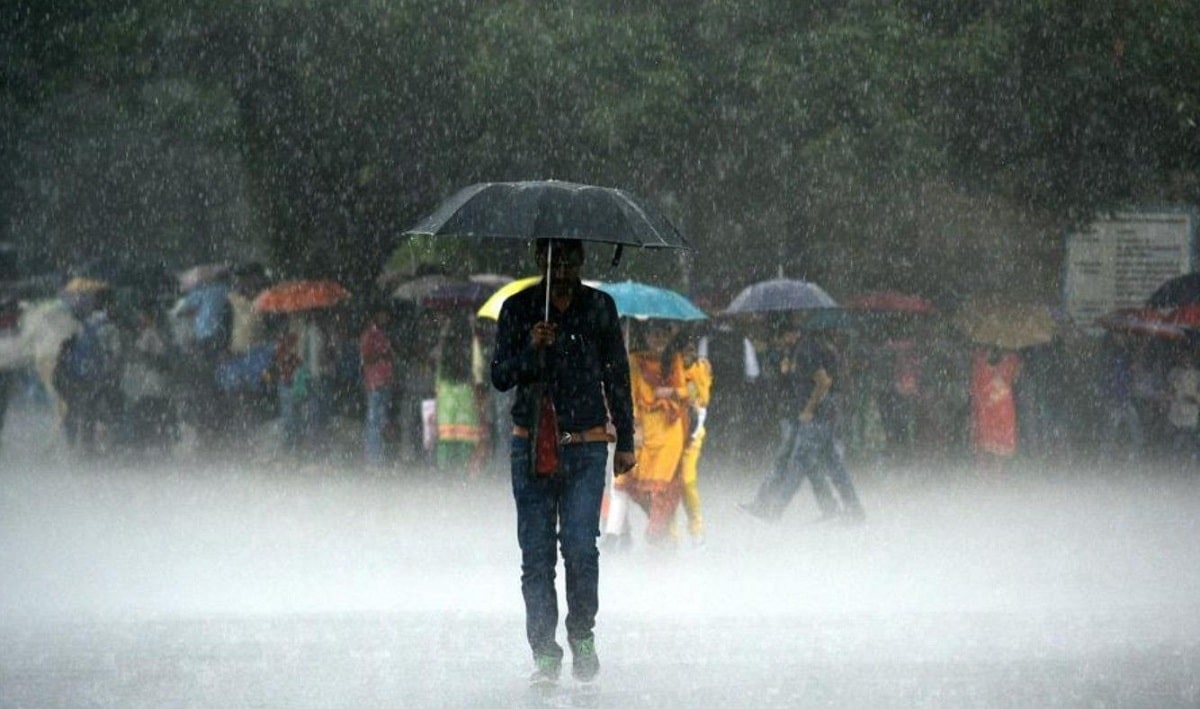
One of the most debated aspects of meteorology is the artificial rain. Given the possible situations of prolonged droughts and the increase in the number of droughts and their intensity caused by climate change, attempts are being made to create artificial rain to eliminate the consequences of the drought and supply water resources to the populations. .
In this article we are going to tell you about the various studies that have been carried out on artificial rain and what has been achieved so far.
artificial rain

Water is one of the most precious natural resources on the planet and, in some regions, one of the scarcest. Recently, due to the effects of climate change, droughts are getting longer. That's why scientists all over the world have been studying artificial rain since 1940, although effective methods to control it have not yet been discovered. Still, several countries continue to experiment with cloud seeding, such as China and the United Arab Emirates.
Techniques used so far rely on spraying clouds with chemicals like silver iodide or frozen carbon dioxide to create a cycle of condensation in the clouds, leading to precipitation. However, the effectiveness of this procedure has not been proven.
However, after years of research and technological development, the National Meteorological Center of the United Arab Emirates has for the first time managed to generate artificial rain without chemicals. To do this, they used a fleet of drones that launched electrical discharges into the clouds, creating rain. This process must be well controlled, as the high temperatures in the region can make the air warm and humid. rise from the cooler air in the atmosphere, generating winds of up to 40 km/h. As a result, the intensity of artificial rain that is achieved in Dubai is high and makes it difficult for vehicles to circulate in some areas.
cloud seeding

For its part, China has already announced this year that it will increase cloud seeding. Asian powers have been trying to manipulate the weather for decades, announcing in early 2021 that they will increase cloud seeding to 5,5 million square kilometers, only in this case China will continue to experiment with chemicals.
This can have unpredictable effects on the environment, especially if it is intended to be installed systematically rather than on time. On the other hand, everything used in the process would fall to the surface and dissolve in the precipitation it produces, potentially altering the region's biodiversity.
Scientists also fear that this Chinese initiative will affect neighboring territories, such as the summer monsoon in India. The University of Taiwan also denounced that these experiments could mean a "rain theft".
Although the effectiveness of cloud seeding is not proven, scientists already warn that the manipulation of rainfall is not the solution to the real problem: climate change.
How artificial rain is generated

Temperatures in the Middle East have exceeded 50°C this summer. In the United Arab Emirates (UAE), a heat wave brought the highest temperatures on record for that period of the year.
Meanwhile, rainfall is limited to a few millimeters per year. However, several videos have appeared on social networks showing downpours in the area. This is why many have suggested that the United Arab Emirates created artificial rainfall.
Cloud seeding is a weather manipulation practice that has been around for 80 years. It is a form of geoengineering that is often the subject of controversy because its effectiveness remains questionable. It is released by substances such as silver iodide in the cloud, which catalyzes the condensation of water droplets and produces artificial rain.
Silver iodide acts as a "scaffold" to which water molecules can attach until they become so heavy that they fall to the Earth's surface. In this way, simple clouds could theoretically transform into true storms, capable of resisting drought.
In the United States, artificial rain generation was also used in the military before it was banned by the United Nations. However, its effectiveness in conflict has never been proven. Weather manipulation is used to prevent violent storms from breaking through the clouds. Starting in 1990, the UAE launched a government-funded research center dedicated to cloud seeding.
Artificial rain in Arabian countries
The objective is to improve the availability of water, for which the program has six planes and $1.5 million in financing. "Improved rainfall can represent an economic and functional resource that will increase current water reserves in arid and semi-arid regions," reads the initiative's website. The UAE aspires to be a leader in artificial rain.
Many videos of the country's torrential rain appear on the YouTube channel of the UAE's National Center for Meteorology (NCM). The agency also published several tweets during the hottest weeks in the region, with the hashtag #cloud_seeding. But nevertheless, it is not clear what happened this summer. In fact, the NCM claimed that these events were normal during this period.
In 2019, the UAE carried out at least 185 cloud seeding operations. At the end of that year, heavy rains and flooding blocked traffic on the streets. In 2021, the NCM will conduct 126 cloud seeding flights, including 14 in mid-July, to generate artificial rain, according to the Gulf Today newspaper.
In the US, the practice has been banned in states like Pennsylvania, while in other parts of the country it is popular during droughts. Between 1979 and 1981, Spain also tried to generate artificial rain through the "Enhanced Precipitation Project". However, the rain never increased due to cloud seeding. Success is in the fight against hail, method that has been applied in several regions of Spain to avoid agricultural losses.
I hope that with this information you can learn more about artificial rain and the consequences it can have.
Informative and educational article. The concept of "rain theft" raised by Taiwan is interesting. The proposal is not so far-fetched. Both silver iodide and Frozen CO2, in addition to favoring condensation, also form adherence surfaces to help form water droplets and capture the surrounding water vapor, promoting and forcing their precipitation.